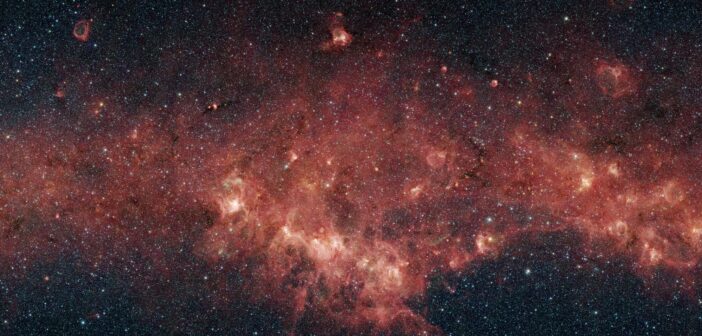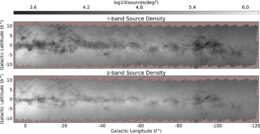Editor’s Note: In these last two weeks of 2023, we’ll be looking at a few selections that we haven’t yet discussed on AAS Nova from among the most-downloaded articles published in AAS journals this year. The usual posting schedule will resume in January.
The Dark Energy Camera Plane Survey 2 (DECaPS2): More Sky, Less Bias, and Better Uncertainties
Published January 2023
Main takeaway:
A team led by Andrew Saydjari (Harvard University; Center for Astrophysics | Harvard & Smithsonian) reports on the second data release of the Dark Energy Camera (DECam) Plane Survey, or DECaPS2. Phases one and two of this survey have covered the entirety of the plane of the Milky Way, and the DECaPS2 catalog contains 3.32 billion sources extracted from 260 hours of observations.Why it’s interesting:
Situated as we are within the plane of the Milky Way, it’s difficult to study objects within the disk of our galaxy — the galactic plane is crowded with stars and clouded with dust and gas. However, most of the objects in our galaxy lie within this plane, so it’s critical to design surveys to investigate this rich environment. In addition to cataloging billions of objects, the team behind DECaPS developed techniques to identify the faint nebulosity that suffuses the galactic disk and complicates our characterization of objects within it.
What’s next for nebulosity:
Knowing the distribution of faint filamentary gas clouds in our galaxy is important for any study of galactic plane objects, since dust makes objects appear redder than they are, and, if unaccounted for, can skew our understanding of these objects’ properties. Looking ahead, the DECaPS team hopes to use their knowledge of nebulosity to infer the three-dimensional structure of gas and dust in the Milky Way.
Citation
Andrew K. Saydjari et al 2023 ApJS 264 28. doi:10.3847/1538-4365/aca594


